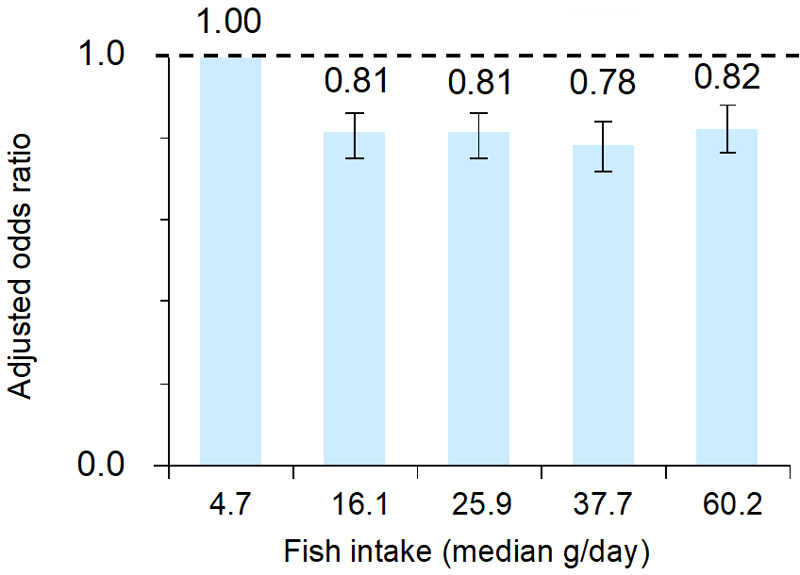Association between mothers’ fish intake during pregnancy and infants’ sleep duration: a nationwide longitudinal study—The Japan Environment and Children’s Study (JECS)

Summary
A research group led by Narumi Sugimori, Research Scholar at the Department of Public Health, Faculty of Medicine, University of Toyama, has revealed that low fish intake by mothers during pregnancy was associated with increased risk of their infants sleeping less than the recommended 11 h at 1 year of age. This finding was obtained by analyzing a large dataset from the Japan Environment and Children’s Study (JECS). The association may have been mediated by maternal n-3 polyunsaturated fatty acid (n-3 PUFA) intake and fetal and infant neurodevelopment. Sufficient maternal intake of fish or PUFAs during pregnancy may reduce the risk of infants sleeping less than the recommended 11 h at 1 year of age.
Key findings
- The prevalence of infants sleeping less than 11 h at 1 year of age for the first to fifth quintiles was 11.2, 9.3, 9.3, 8.9, and 9.2 %, respectively.
- Adjusted odds ratios (95% CI) with the lowest quintile of fish intake set as a reference for the second through fifth quintiles were 0.81 (0.76–0.87), 0.81 (0.76–0.87), 0.78 (0.72–0.84), and 0.82 (0.76–0.88), respectively.
Background and overview
N-3 PUFAs are important to human nutrition, particularly to the growth and development of the central nervous system (CNS) in fetuses and infants. Consequently, sufficient n-3 PUFA intake by mothers during pregnancy is considered to contribute to CNS development in their infants. CNS development is known to be associated with sleep, but no large epidemiological studies have yet confirmed whether mothers’ n-3 PUFA intake during pregnancy is associated with infants’ sleep.
After exclusion and multiple imputation from a dataset comprising 104 065 records from the JECS, we examined 87 337 mother–child pairs for the association between mothers’ fish and n-3 PUFA intakes and the risk of their infants sleeping less than the recommended 11 h at 1 year of age.
Multiple logistic regression analysis with the lowest quintile used as a reference revealed that odds ratios for the second through fifth quintiles for fish intake were 0.81 (95% confidence interval [95% CI] 0.76–0.87), 0.81 (95% CI 0.76–0.87), 0.78 (95% CI 0.72–0.84), and 0.82 (95% CI 0.76–0.88; p for trend < 0.001) and for n-3 PUFA intake were 0.90 (95% CI 0.84–0.97), 0.88 (95% CI 0.81–0.94), 0.88 (95% CI 0.82–0.95), and 0.93 (95% CI 0.86–0.998; p for trend = 0.04).
Low fish intake during pregnancy may increase the risk of infants sleeping less than 11 h at 1 year of age. This relationship might be mediated by maternal n-3 PUFA intake and fetal and infant neurodevelopment. Interventional and other studies are warranted to determine a sufficient level of maternal fish intake during pregnancy.

Figure. Odds ratios (95% CIs) for risk of infants sleeping less than 11 h at 1 year of age according to quintile for mothers’ fish intake during pregnancy.
JECS is funded by the Ministry of the Environment, Japan. The findings and conclusions of this article are solely the responsibility of the authors, and do not represent the official views of the Japanese government.
Original Article
Association between mothers’ fish intake during pregnancy and infants’ sleep duration: a nationwide longitudinal study—The Japan Environment and Children’s Study (JECS)
- Narumi Sugimori, Kei Hamazaki, Kenta Matsumura, Haruka Kasamatsu, Akiko Tsuchida, Hidekuni Inadera, the Japan Environment Children’s Study Group
- European Journal of Nutrition, Online ahead of print.

